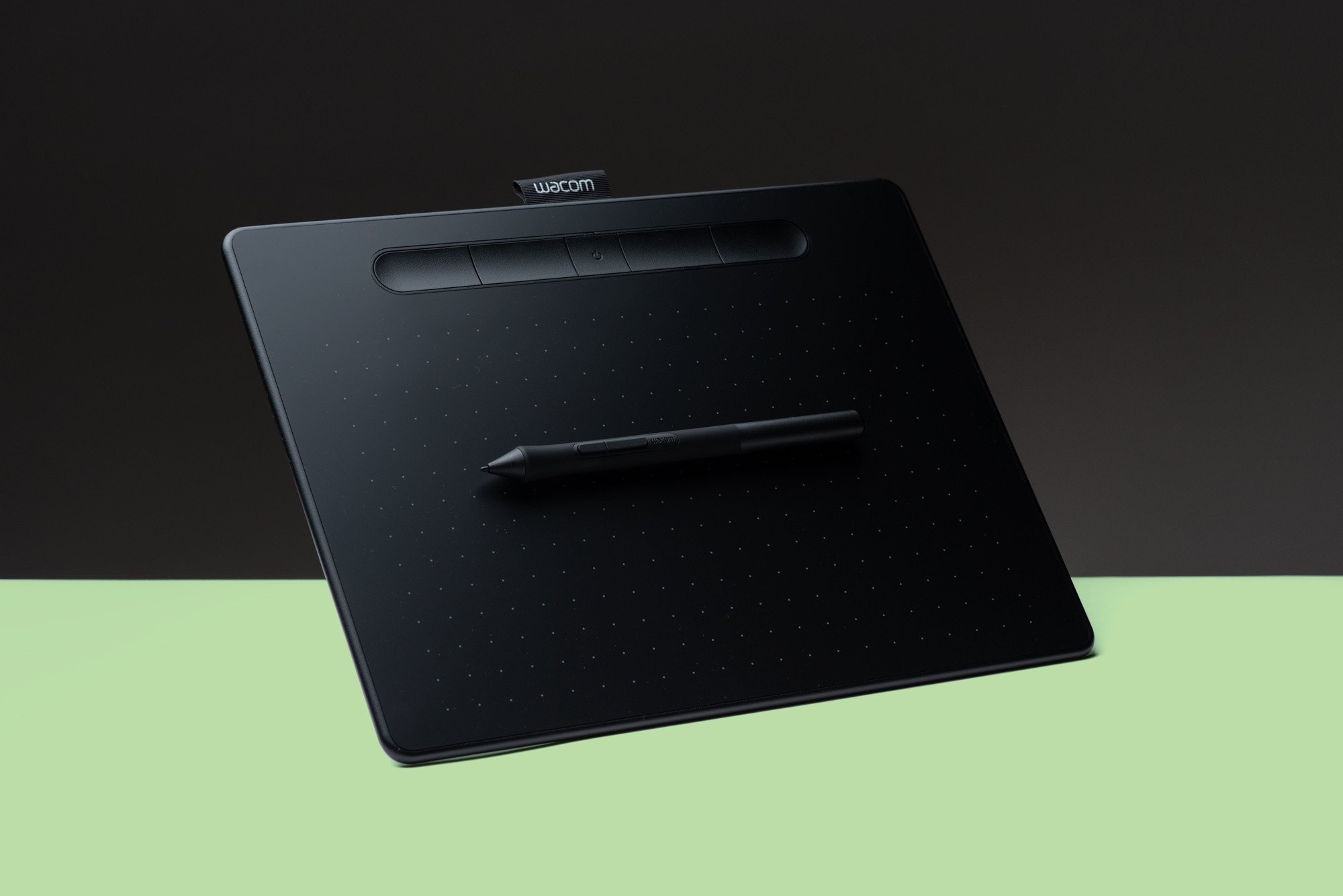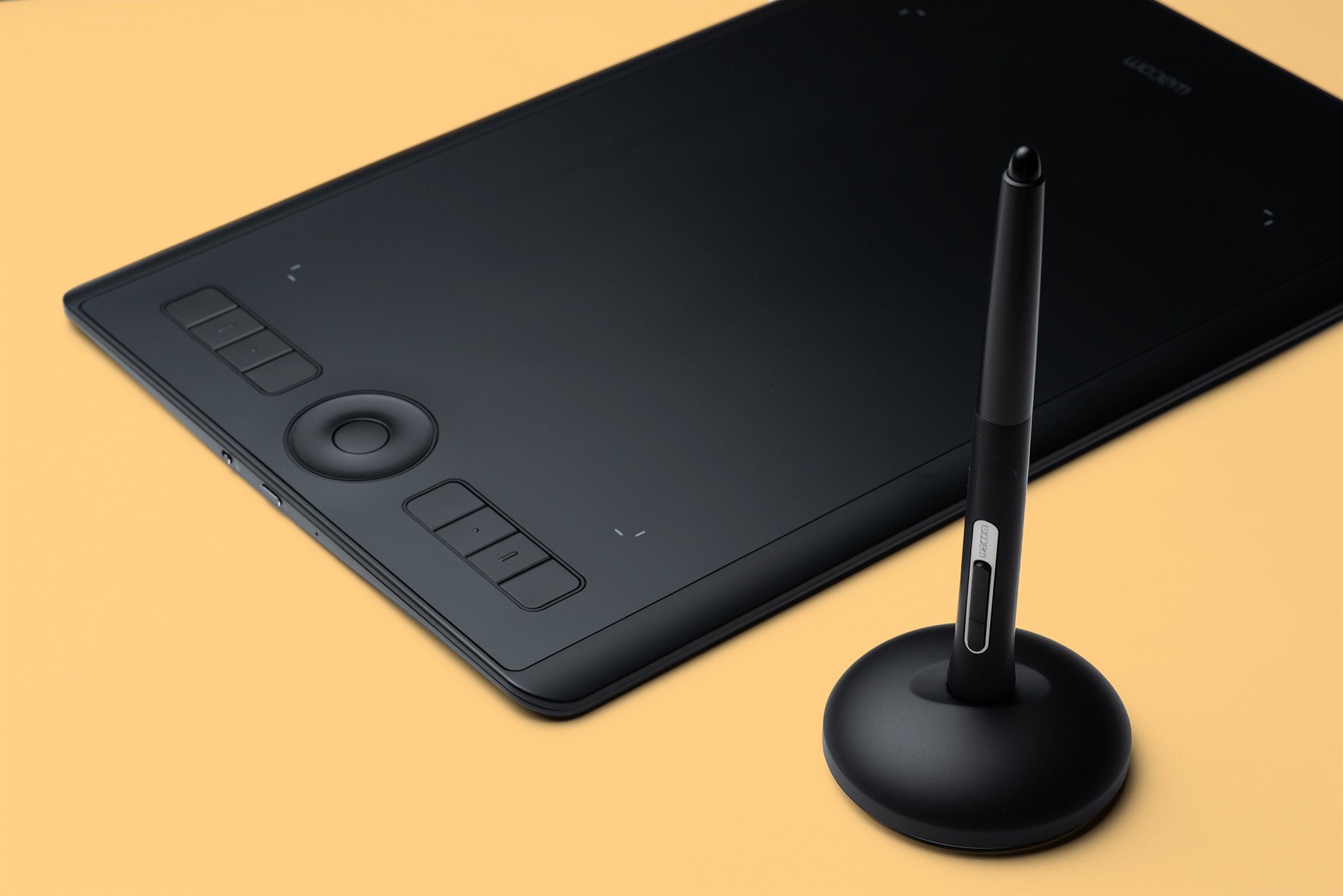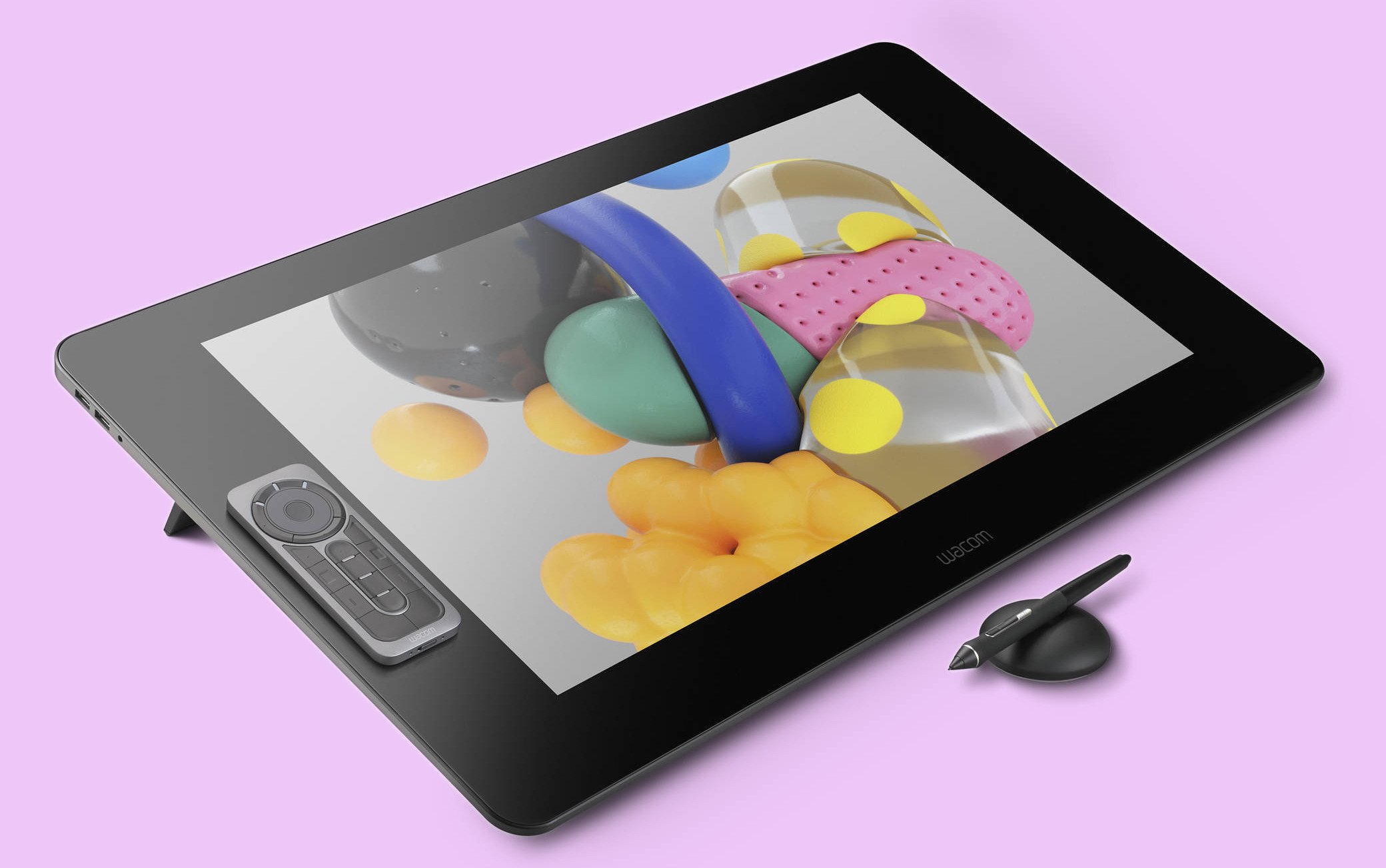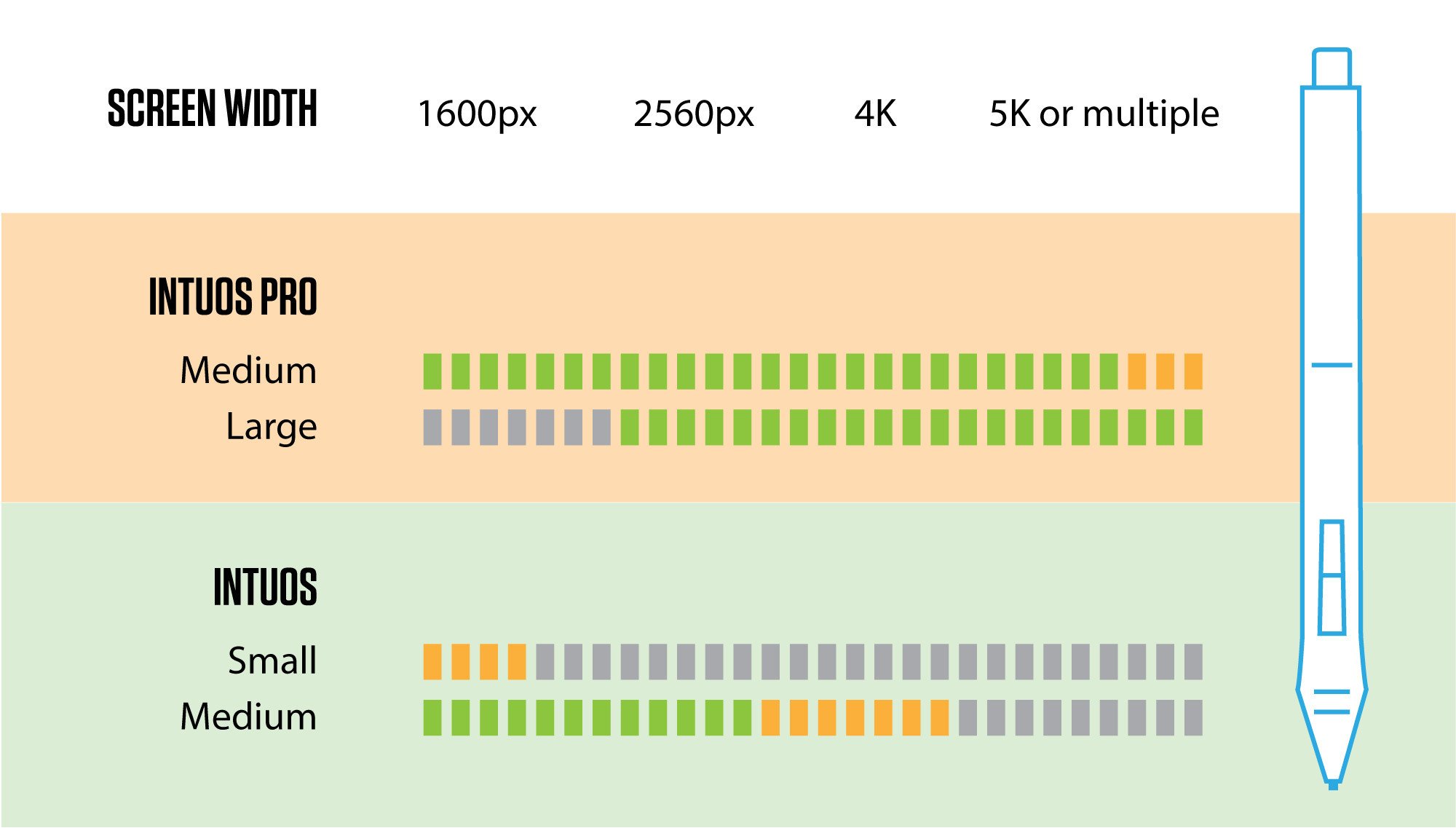Best Pen Tablet Drawing+ Notes 2017
How to choose the best drawing tablet in 2021 and Wacom alternatives
What is a drawing tablet?
Drawing tablets, also known as pen tablets or graphic tablets, are input devices that can be used to substitute or complement a mouse. They're very popular in the graphic arts field and are considered by some as an indispensable aid for any creative professional.
Cameratico is reader-supported through affiliate links.
As an Amazon Associate I earn from qualifying purchases.

The Wacom Intuos M replaces the Intuos Pro Medium as my top pick for the best drawing tablet for most users. It's a really capable product that can handle professional work environments as long as you don't need tilt support, multi touch input and are not using 4K or multiple displays. For those cases, the Wacom Intuos Pro M is still the best option.
If you're on a budget, take a good look at the XP-PEN Deco Pro Medium and Small models, or even cheaper, the XP-PEN Deco 01 V2. In a nutshell, the Deco Pro models support tilt like the more expensive Wacom Intuos Pro lineup, while the Deco 01 V2 trades tilt for a larger work area and lower price, compared to the Deco Pro Small model.
What is a drawing tablet used for?
Drawing tablets can be used for most creative and content production needs such as illustration, photography, 3D modeling, animation, graphic design, etc. Most professional programs on those fields offer advanced pen support and can recognize and use pen pressure and even tilt, on more feature-rich models like the Wacom Intuos Pro lineup.
Touching the tip of the pen on the tablet surface is the equivalent of a click, while pressure and pen tilt can be used to vary stroke width, opacity, effect intensity, and other attributes. There are buttons on the pen that can be programmed for right click or other commands.
Most important of all, working with a drawing tablet is faster and more efficient than with a mouse. Your hand can travel from point to point on the screen in a single movement instead of repeated slides, as with a conventional mouse or trackpad. More importantly, it also allows for more natural input in activities such as drawing and photo retouching.
Why using a pen is better than a mouse
Holding a pen is also much more ergonomic than using a mouse, and most users with repetitive strain injury (RSI) or tendonitis suffer less pain when using a tablet. In my personal case, it completely cured a chronic pain I had in my right wrist. I've been using a Wacom pen tablet exclusively for the past 20 years and could not go back to a mouse.
Working with a mouse requires repetitive muscle movements while the rest of the hand keeps still, creating uneven muscle fatigue. A pen, on the other hand, allows you to work in a more relaxed position and eliminates the forearm twisting that strains muscles and tendons. At the end of the day, it feels much more natural and relaxed.

The Wacom Intuos Pro Medium (PTH-660, released in January 2017) drawing tablet is our top pick for all creative professional fields - such as design, illustration, video and photography. The medium size has plenty of resolution to handle single displays of any common size, including 4K or 5K LCDs above 30". For a lower priced alternative, check out the regular Intuos Medium with Bluetooth (model CTL-6100WL).
Areas in which drawing tablets don't work so well
There are a few areas in which even the best drawing tablets are not the ideal input devices.
Most games don't work very well with pen input, as their interfaces were originally designed for mouse control. Think about controlling a first person shooter with a pen. It definitely makes little sense.
In the architectural and engineering fields, there's a split: some users love it, some hate it, mostly because the mouse scroll wheel is very handy for zooming on CAD programs and Wacom tablets have that feature on the tablet surface, requiring putting the pen aside to use it. Pressure sensitivity is also ignored in those programs, neglecting one of the tablet's main features. On the other hand, the more ergonomic position and programmable buttons could more than make up for it.
Wacom recently introduced an optional pen designed specifically for 3D programs. The Wacom Pro Pen 3D – compatible with current Intuos Pro, Cintiq Pro and MobileStudio Pro models – trades the pressure sensitive eraser in the back for an additional customizable button that can be mapped to any command in your application. It's not a real breakthrough compared to the regular Pro Pen, but the extra button can come in handy when navigating 3 axis of movement in a 3D design program.
Using a pen alongside with a regular mouse
When consulting with other photographers and designers, I often find people that choose a mouse for general computer usage and switch to the pen tablet for creative programs, such as Adobe Photoshop, Lightroom or design apps. Keep in mind that Wacom drivers play well with mice and both devices do not interfere with each other.
I've personally switched fully to pen input almost 20 years ago, abandoned the mouse and never looked back. I use my Intuos Pro Medium for everything and keep a regular Intuos Medium for traveling with the laptop. Not coincidently, those are the most well rounded models on Wacom's lineup and my top recommendations for most users.
Will touch devices kill pen tablets?
I doubt it. Without a major exercise in user interface design, my feeling is that we won't be able to achieve the necessary drawing precision with bare fingers to replace tablets. The two technologies are complementary and Wacom offers models that incorporate touch control. This gives us the best of both worlds: bare finger touch and gestures for quick window transitions, icon and menu selections, along with a pen for more precise actions where pinpoint accuracy and especially pressure sensitivity are indispensable.
Keep in mind that touch input can be an overrated feature for some use cases. Laptop users, for example, already have a good trackpad or touchscreen at their disposal, lessening the need for multi touch on the tablet itself. On the pen displays front, sometimes touch input gets in the way of your work and can interfere with the pen, even with the excellent palm rejection on newer Wacom models. The Cintiq Pro 24 with multi touch costs $500 more than its regular sibling and I'd personally choose the non-touch version for my work.
Which pen tablet should I get?
Wacom is still the best brand of drawing tablets, but keep an eye on the less expensive alternatives
Wacom still offers the best pen tablets on the market but the competition has been heating up on the past few years and now we can find good quality cheap drawing tablets from a variety of brands such as Huion, XP-PEN, Artisul, Gaomon, Monoprice, Ugee and Yiynova.
Unlike most of the competition, Wacom pens use a patented electromagnetic resonance (EMR) technology, so they don't need batteries or any wires to function, reducing maintenance and weight for a more natural pen feel. The most noticeable difference, though, is not the lack of a battery. To be fair, nowadays the batteries on alternative pen tablet brands last so long that this is not really an issue and both XP-PEN and Huion offer models with battery-free EMR pens.
What really sets Wacom pen tablets apart is better pen precision, with improved pressure transitions and less wavy diagonal lines than the competition. Wacom tablets tend to be supported for a longer time and have better drivers and third party integration than competing brands, making them a lasting investment.
I've always recommended Wacom tablets since the first revision of this guide, 7 years ago, but the panorama has been slowly changing in the past few years, specially on the pen display and tablet computer markets. Wacom's Cintiq Pro and MobileStudio Pro lineups now find strong competition from the budget brands, Microsoft Surface tablets and even the iPad with the optional Apple Pencil.
As those devices come down in price, creative professionals may be tempted to migrate from a traditional pen tablet (Intuos) or pen display (Cintiq Pro) to a full blown tablet that integrates pen, display and computer in a single device. This makes a lot of sense for illustrators as all-in-one devices combine portability with the practicality of working directly on a canvas. Mobile computer power has been increasing steadily and tablet computers can now replace desktop computers for most tasks.
Wacom updated its tablet computer models in 2019: The MobileStudio Pro 13 (13.3 inch) and the MobileStudio Pro 16 (15.6 inch). The larger model offers an UHD (3840 x 2160) display with better color gamut, covering 94% of the AdobeRGB color space. Both come with Intel i7 processors, 16GB of RAM and 512GB of storage.

The Wacom Cintiq Pro 24 is an illustrator's dream come true: a large 24" digital canvas with very little parallax, 4K resolution, wide color gamut and the latest pen technology.
In addition to those, the Cintiq Pro 24 and 32 models can accept an optional computing module called Wacom Cintiq Pro Engine. This module turns the pen display into an upgradeable Windows 10 workstation. It's not really portable as it lacks a battery, but is a far more self contained solution than lugging a desktop around. These modules are pricey but deliver pro grade hardware on a compact package, which can be interesting for users in professional environments.
It's a tough market for Wacom as bigger companies, like Microsoft, can afford to iterate faster between hardware revisions. It took Microsoft 7 years to introduce eight new Surface Pro models and their latest version, the Surface Pro 8, is a very tempting alternative on the tablet / pen computer space, specially for users that need a full blown Windows desktop workflow. Just keep in mind that the pen for this latest model is sold separately – Microsoft Surface Slim Pen 2 – and upgrading to the 16GB RAM / 512GB SSD model could be a good investment.
In 2021, Wacom still produces the best dedicated drawing devices, while the Surface tablets are better all around computers and nothing can beat the iPad with Apple Pencil on low price, ease of use and convenience, while losing on integration and access to professional workflows.
Best cheap drawing tablet and Wacom alternatives
On the traditional pen tablets front, If you're on tight budget and cannot stretch it to the $200 range for an Intuos M with Bluetooth, take a good look at the XP-PEN Deco Pro Small in the $100 range and the Deco 01 v2 at the $60 mark. Both models are highly rated, offer better specs and really good hardware build quality for less than a comparable Wacom product. If your budget allows, I still think the Intuos M is a better long-term investment.
Best Wacom drawing tablets and pen displays in 2021
Here are our top picks in each of Wacom's main product lines. Those are the models we feel are the most competitive and up to date, representing the best bang for the buck for any creative professional.
Drawing tablets - Intuos and Intuos Pro
- Intuos Pro Medium model PTH-660, released in 2017
- This is the most well rounded model of all Wacom pen tablets. It has the right blend of size, resolution and features to satisfy most creative users and display configurations. Hardware quality is excellent and based on the track record of my own previous Wacom Pro tablets, it should last for several years of daily use.
- Intuos Medium model CTL-6100WL, released in 2018
- The regular Intuos line offers great value for first-time pen tablet buyers or anyone on a budget. Well made, very light and thin, with enough resolution to work well on large displays up to 2560 pixels in width. It is also an excellent travel companion for users that already have a Pro model on their main setup and would like a more portable alternative for traveling.
Which models to avoid
Note that the small Intuos models are not among our recommended buys for creative work. The smaller surface area combined with the lower resolution makes it hard to achieve the necessary cursor precision for creative work, specially on higher resolution displays. Those models are more suitable for general computer usage, handwriting recognition and for educational uses.
Intuos vs. Intuos Pro
Event though the regular Intuos offers great bang for the buck, there are a few key differences that set the Pro model apart. If you're choosing between both and have the budget to afford the Pro model, take some time to understand if any those features would be an important asset for your particular use case.
- Tilt support
- Required to correctly simulate the shapes of natural brushes, making it a must-have feature for illustrators working in programs that simulate natural media. Tilt gives much more natural results in those cases and there's no software workaround for that.
- Multi-touch input
- If you're a desktop computer user, chances are that you're going to miss having touch support for OS gestures and navigation. The quality of touch input on an Intuos Pro isn't up to the best trackpads, but is still very good and comes in handy for zooming, scrolling and switching between windows while working.
- Higher resolution
- Wacom didn't stand still as computer displays increased in resolution. Current pen tablets offer really high resolution and even the regular Intuos can handle large resolutions with excellent cursor precision. The Intuos M model, for example, can address up to 2540 lines per inch, which translates into 21600 by 13500 points on its surface. Pro models have double the resolution at 5080 lpi and a slightly larger active area. Compared to a typical display resolution, that is plenty.
- In practice, I felt comfortable using the Intuos M tablet up to a single 30" display with 2560x1600 pixels. At that resolution, the Pro model felt a bit more precise, but the regular one was still plenty useable. That's higher than the actual resolution of a 5K iMac running on its native Retina scaling, which is equivalent to a 2560x1440 display.
- Users with 4K displays running at their native resolution of 3840x2160 or multiple display users should invest on an Intuos Pro M model, as the resolution difference becomes very apparent in those cases and the regular Intuos M model doesn't deliver enough accuracy for critical work.
- Build quality and accessories
- The Intuos Pro is better constructed and feels like a luxury product in hand. It's built like a tank and should last for years of professional use. The Pro lineup also offers more accessories, like optional pens, nibs and surface sheets in difference textures.
Choosing the correct drawing tablet size
Tablet size and resolution vs. screen size
Tablet sizes should be relative to your screen size and resolution. The smaller the tablet surface, the less hand movement will be necessary to move the cursor on the screen. Having a tablet too small for your screen leads to a jumpy cursor and makes fine selections difficult. A tablet too big for your screen feels slow, requiring more hand movement, and may tire your arm muscles quicker.
Tablet resolution is also a factor. The regular Intuos model has half the resolution of the flagship Intuos Pro line and this difference may be very noticeable, depending on your screen size. Given the same tablet size, the higher the resolution, the bigger the screen that can be used comfortably with it.
Bigger tablets, such as the 16.8" x 11.2" (430 x 287 mm) models (Intuos Pro Large, for example), are difficult to use along with a keyboard and tend to be more adequate for single task work where typing is secondary, for example video editing or drawing. If you are an illustrator and likes to draw with very long strokes, a larger drawing area may be necessary. For most artists, the medium sized models are the sweet spot.
For dual display use, keep in mind that the overall screen proportion is much more horizontal than the tablet itself. Through the system preferences configuration panel, the tablet can be set up for different screen mappings, single screen mode or screen switching with a hotkey. The most natural way, in my opinion, is to keep the screen proportion exactly the same as the tablet surface. If you use dual displays, this means that some of the vertical area of the tablet would be inactive and that the horizontal resolution available will be mapped to a much bigger number of pixels—for example, 3840 x 1080 for dual 24" 1080P displays. This would require a larger drawing area than a single screen, and preferably a high end tablet such as the Intuos Pro Medium or Large models. An alternative that works fairly well is to use a smaller tablet and set up a hot key combination to switch the control between the two screens, but doing this create some confusion when dragging objects from one screen to the other.
My favorite keyboard for use along with a Wacom tablet is Logitech K810 (PC), or K811 (Mac), because it has a smaller footprint and fits nicely at either side of the tablet. A full size keyboard may be too large to be used on the side of a tablet larger than an Intuos Pro Medium, leaving the tablet too far from the central seating position. Some users prefer to place the keyboard in front of the tablet. This arrangement works best if you don't need to use the keyboard much while working and is not my preferred working position.

Pay attention to the tablet size you choose: Having a tablet too small for your screen feels imprecise and makes fine selections difficult. A tablet too big for your screen feels slow, requiring too much hand movement, and may tire your arm muscles quicker.
Retina Displays and resolution scaling
Always consider the actual effective resolution of your screen, and not the raw hardware resolution, to chose the most adequate pen tablet model and size. For example, even though an Apple MacBook Pro 13" display has 2560 x 1600 pixels at native resolution, the operating system default and recommended scaled resolutions vary from 1680 x 1050 to 1440 x 900 pixels. This is well within the realms of a regular Intuos Medium model.
First days with your new drawing tablet
Working with a tablet is a paradigm change and may require an adaptation period for hardcore mouse addicts.
All pen tablets work with absolute positioning, while mice are relative positioning devices. This means that you can slide your mouse several times to move the cursor across your screen, while on a tablet all you do is move your hand and position the pen tip on the corresponding point on the tablet surface. This changes your eye vs. hand coordination logic and can be a little daunting the first time.
I bought my first Wacom Graphire 4" x 5" model, circa 1998, after suffering from carpal tunnel syndrome for a good time. No matter what treatment I used, I always felt pain after using my mouse for extended periods, so adapting to a new input device was surely less painful than keeping the mouse.
My tablet arrived in the middle of a book design job and I delved straight into it, leaving the mouse disconnected. You can use a mouse along with the tablet, but my reasoning was that the more I forced myself to get used to the tablet, the faster I'd master it. After two days of work, I was already comfortable with it and never used a mouse again in the 20 years after that day.
A peek into the future
At 40, I'm older than the average twenty-something that populates most creative studios around the world. I come from an age where screens were monochromatic and there was no Snapchat or even the Internet. Oh, the horror!
While I love desktop computers and focus on tools that allow me to get stuff done with maximum efficiency, I have to concede that the world is moving towards mobile devices and playing with the amazing tech toys we have nowadays can be an amazing creative outlet.
People and companies (I'm looking at you, Apple) are abandoning desktops and this trend is no different on the pen tablet market. We're moving from pen input devices and pen enabled displays to complete tablets that marry computer, display, touch and pen on the same device. This makes a lot of sense for the general public and specially illustrators, who now have freedom to produce work anywhere without being tied to a computer.
On the other hand, it makes absolutely no sense trying to use a tablet computer, even a powerful one, for movie editing, web design, 3D animation, print design or even professional photography. Those are areas that benefit greatly not only from pen input, but also from raw processing power and workflows that favor integration between different programs, fast storage devices and multiple professionals working simultaneously on a project. In those cases, desktop computers offer much better bang for the buck and workflow integration options.
In other words, I wouldn't abandon my computer and Intuos Pro (or Cintiq Pro) for an iPad, even though I'd heartily recommend an iPad for illustrators, comic artists or students who want to dive into the creative field.
Keep in mind that none of the companies that occupy this big market are standing still.
I recognize Wacom as a company that moves fast, experiments a lot and thinks outside of the box, even though this sometimes leads to a confusing product lineup. This is a great trait coming from a large company. Their recently revamped tablet line, the MobileStudio Pro, is a very well reviewed device that bridges the gaps between mobile devices and traditional pen input.
Microsoft offers the best laptop replacement tablets on the market. The n-Trig technology used for pen input is not up to Wacom's gold standard, but has been improving at a fast pace and the Surface Pro 8 is a great device, surely capable to replace a traditional computer and Cintiq combo for a lot of use cases. Microsoft made great improvements on the pen latency, initial activation force and pen wobble on this latest iteration.
Apple is another important player. The iPad Pro and Apple Pencil introduction was received with some skepticism from professional users – myself included – but has proved itself as a worthwhile alternative for digital illustration. The iPad excels in usability and is a much leaner and portable package than even a Microsoft Surface Pro tablet, not to mention the big price difference. The latest iPad + Apple Pencil combo can be had for less than half the price of a Surface Pro 8 and a third of the least expensive Wacom MobileStudio Pro.
iOS software ecosystem favors newcomers and outside thinking, bringing to the market programs like Procreate and Paper by Fifty Three, for drawing, or even Astropad, which turns and iPad into a Wacom Cintiq replacement. Traditional software companies are also investing in this market. Take a look at SketchBook by Autodesk and the offerings from Adobe that transform the iPads into companion devices for the desktop Creative Suite.
Best Pen Tablet Drawing+ Notes 2017
Source: https://cameratico.com/guides/how-to-choose-wacom-pen-tablet/
0 Response to "Best Pen Tablet Drawing+ Notes 2017"
Post a Comment